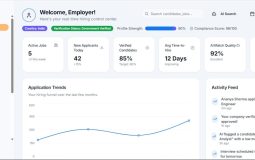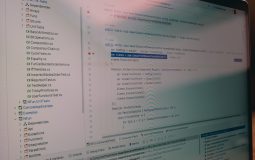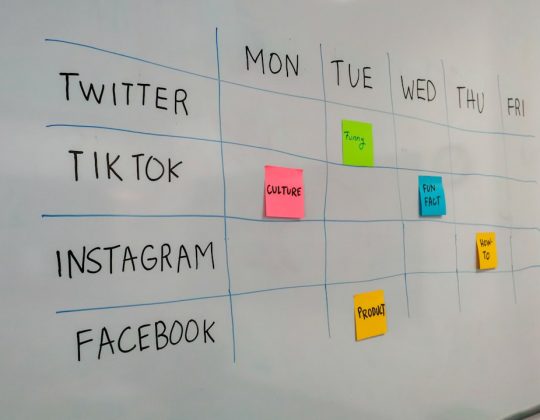Managing employee performance, attendance, and productivity has become more streamlined thanks to the rise of employee tracking software. For U.S. businesses large and small, choosing the right employee tracker isn’t just a smart move—it’s essential. The right tool can empower employers to make data-driven decisions, improve team communication, and support remote and hybrid work models. However, with so many options on the market, finding the perfect fit requires a careful evaluation of features, compliance, and implementation strategy.
Why Employee Trackers Matter
Employee tracking systems are designed to monitor various aspects of employee behavior and performance. These platforms can:
- Track work hours and attendance
- Monitor computer usage and productivity
- Facilitate project management and time allocation
- Generate insightful reports on employee performance
For businesses in the U.S., where labor laws and privacy regulations like the Fair Labor Standards Act (FLSA) apply, using an employee tracker responsibly can help ensure compliance and transparency.
Key Features to Look For
When evaluating employee trackers, certain features should be prioritized to ensure the software truly supports your business goals. Here’s what the best systems typically offer:
1. Time and Attendance Tracking
A reliable tracker should include capabilities to log clock-ins, clock-outs, breaks, and overtime. For U.S. employers, keeping accurate records is crucial to comply with FLSA regulations.
2. Productivity Monitoring
Whether employees are in-office or remote, a good tool should provide insights into how time is being spent. Features like:
- Active and idle time logging
- Website and app usage monitoring
- Screenshots (configurable by policy)
…help you identify areas where workflow improvements are needed.
3. Integration Capabilities
The best employee tracking software will integrate with popular productivity and payroll tools such as:
- QuickBooks
- Slack
- Microsoft Teams
- Asana, Trello, or Jira
4. Customizable Reporting
Custom reports not only provide transparency for managers but can also support data-driven decision-making. Look for systems that allow you to filter data by team, individual, project, and time period.
5. Mobile Access
In today’s mobile-first world, it’s important to allow both employees and managers to access the system via smartphones or tablets. This promotes on-the-go management and ease of use for remote teams.
6. Employee Self-Service Portal
Giving employees visibility into their own time logs, performance metrics, and tasks promotes trust and accountability. It also reduces HR bottlenecks by enabling workers to correct or question data themselves.
Compliance and Privacy Considerations
Implementing an employee tracking solution in the U.S. means you need to be fully aware of the legal landscape. While it’s legal to monitor employees on company devices, best practice suggests making tracking transparent and documenting employee consent.
Here are key compliance questions to address:
- Are you informing employees about what data is being collected?
- Are you offering clear privacy policies?
- Are tracking mechanisms compliant with U.S. labor laws?
Transparency not only reduces legal risks but also boosts employee morale, as staff feel they are being respected rather than surveilled.
Popular Employee Tracking Tools Worth Considering
While there are many platforms in the market, here are a few that stand out for their capabilities and ease of use:
1. Hubstaff
Known for its GPS tracking and productivity tools, Hubstaff works well for field teams and remote employees. Its integrations with platforms like Asana and Trello make it a versatile choice.
2. Time Doctor
Offers time tracking, distraction alerts, and even client login portals. Its user interface is intuitive, and reporting tools are comprehensive.
3. BambooHR
A human resources suite with a time tracking module. Ideal for medium-sized U.S. businesses looking for centralized HR management.
4. Teramind
Designed for strict data control, this platform offers detailed behavior analytics, ideal for industries where security is key, like finance or healthcare.
Choosing the right tool depends on your company’s size, industry, work model (remote or in-person), and the specific metrics you want to track.
Best Practices for Implementation
Implementing a tracking system is not just about technology—it’s also about change management. Here are several tips to ensure a smooth rollout:
1. Communicate Transparently with Your Team
Before rolling out the software, inform employees about what’s being tracked, why it’s important, and how it benefits them. Transparency removes fear and promotes buy-in.
2. Start with a Pilot Program
Test the tool with a small group before company-wide deployment. This allows you to gather feedback, fix issues, and create internal champions.
3. Provide Training and Onboarding
Offer tutorials and training sessions to ensure everyone knows how to use the software correctly. Highlight features that empower employees, such as self-service dashboards.
4. Monitor and Adjust
Once implemented, continue to review how the tool is used. Are reports accurate? Are privacy settings appropriate? Continuously optimize settings based on feedback and company policy.
5. Emphasize Outcomes Over Activity
Focus on what’s being achieved rather than how many hours a person is active. This keeps the workplace goal-oriented and reduces micromanagement concerns.
Challenges and How to Overcome Them
While the benefits of an employee tracker are numerous, the road to successful implementation can come with challenges:
- Resistance from employees: Address this with open dialogue, emphasizing trust and benefits.
- Data overload: Focus on KPIs that matter. Customize dashboards to avoid getting lost in analysis paralysis.
- Privacy concerns: Align with legal counsel to ensure policies are compliant and ethical.
The Future of Employee Tracking in the U.S.
As hybrid and flexible work continue to rise, employee tracking software will evolve to become smarter and more adaptive. AI-based analytics, real-time productivity coaching, and seamless integration with wearables may become standard features. At the heart of it all will be a growing commitment to balance oversight with respect for individual autonomy.
Final Thoughts
Choosing the best employee tracker for your U.S. business isn’t just a technical decision—it’s a strategic one. The right software empowers your team, improves operational efficiency, and ensures alignment with labor laws. By focusing on key features, being mindful of compliance, and rolling out the system with clear communication, you’ll pave the way for a happier, more productive workforce.
Whether you’re managing a startup or scaling a national enterprise, an effective employee tracker can be your competitive edge in today’s fast-paced business environment.








